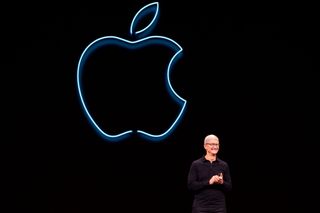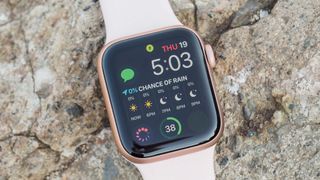Apple 2020 preview: iPhone 12, Apple Watch 6 and a lot more
Here's what the coming year looks like for Apple

Predicting what Apple will do is a tricky business. The company is famously secretive, though leaks from far corners of its supply chain can give us some clues, particularly when it comes to new iPhones. Still, for a company with a reputation for being groundbreaking, Apple is remarkably conservative. Most of its product lines will continue to zig along, remaining on their existing trajectories, with some minor updates or course corrections.
But when Apple zags, it can be an enormous surprise — and often a defining moment for the tech world at large. Here's a look at the crystal ball for Apple in 2020, forecasting where the company's business is bubbling along and where there might be an opportunity for big moves.
iPhone 12 and iPhone SE 2: More is more
When Apple zags, it can be an enormous surprise.
The story of the iPhone of 2019 was a redefinition and repricing of the base-model product. Yes, the iPhone 11 is just the successor to 2018's iPhone XR, but by giving the 11 the flagship name and cutting the price, Apple sent a strong signal that the iPhone product line was going to be more accessible and affordable than in previous years.
Expect more of that in 2020, as rumors suggest that Apple will launch the iPhone SE 2, this time as a lower-cost phone at the size of the iPhone 6, 7 and 8. Rumors also suggest that the company will add a smaller, lower-cost companion to the iPhone 11.
We can also expect the iPhone 12, which should bring 5G connectivity to Apple's lineup. Besides a 5G modem, the iPhone 12 lineup could add features like a new time-of-flight sensor that delivers more augmented-reality features, a screen with a faster refresh rate and the usual performance improvements from a new Apple-designed processor. Throw the iPhone 12 models into the mix, and the result would be five brand-new phone models released in a single calendar year, which would be a record for Apple.

It's not a bad way to counter stagnant iPhone sales: Offer high-end, high-feature products for Apple's most demanding and price-insensitive customer base, while making the lower-end models that don't feel like a bunch of day-old doughnuts. Still, it's worth noting that this will mark the fourth year of the design introduced with the iPhone X and the third year of the iPhone XR/11 design. If Apple doesn't change things up, it risks another sales slide as a market eager for a truly new iPhone gets more of the same old, same old.
iOS 14 and Apple software: Sleek stability
Whether by plan or by accident, Apple finds itself in a tick-tock cycle of software development. After a chaotic and controversial 2017, Apple responded in 2018 by rolling out new versions of macOS and iOS that were focused on stability and performance, and it executed well on that focus. But this year, Apple's operating systems took large strides forward and ended up getting bitten by bugs. A summer that Apple developers might have spent building Mac apps based on iOS code or learning how to build apps using the new SwiftUI framework was instead spent dealing with bugs and compatibility updates.
Look for the pendulum to shift back in 2020, with Apple taking its foot off the gas a bit and instead providing an island of stability for developers and users alike. This isn't to say that Apple won't offer new features to iOS, macOS, iPadOS, watchOS and tvOS in 2020; rather, the company will feel less fear about kicking some features out into 2021 to make sure that this year's summer of instability isn't repeated. It's a shift in gears that will also give SwiftUI and Mac Catalyst another cycle to mature.

As for iOS 14 specifically, beyond stability, I imagine that 2020's iOS update will lean even further into augmented reality and improvements to machine learning. Apple will continue to develop the software that will make or break the company's future wearable products as ancillary features for the iPad and iPhone. Traditionally, Apple has added new iPad features only every other year, but with the debut of the iPadOS name in 2019, the company has put itself on the spot. So presumably we'll see some new iPad features as well, perhaps focused on further bringing the iPad up to parity with traditional PC features, by improving multitasking, for example.
More MacBooks get Magic Keyboard and an ARM-based MacBook Air?
I do wonder if Apple's surprise move of the year might come on the Mac side.
With the introduction of the 16-inch MacBook Pro in November, it seems like Apple is embarking on a transition that will bring a much-wanted keyboard redesign to all the company's laptops throughout 2020. At the very least, expect a new 13- or 14-inch MacBook Pro in the spring, with a Magic Keyboard and a reduced Touch Bar with a real Escape key. It's hard to believe that the company won't also update the MacBook Air, introduced a year ago, with a much less controversial keyboard.
I do wonder if Apple's surprise move of the year might come on the Mac side. For years now, there's been speculation that Apple would move away from using Intel processors on the Mac in favor of Apple-designed, ARM-based chips like those found in the iPad and iPhone. This hasn't happened yet, but the consumer side of Apple's laptop line consists of just the Retina MacBook Air. I wouldn't be surprised if Apple finally took the wraps off a new processor family for the Mac in 2020, starting with a power-sipping consumer laptop with a long-lasting battery. (Then again, I predicted this in 2019 and it didn't happen. One of these days ... )
Apple last updated the iMac Pro two years ago and the iMac in the spring of 2019. The iMac remains a billion-dollar business for Apple, but the product hasn't seen a major redesign in years. Perhaps this is the year that Apple takes the reengineering that it used to create the iMac Pro and rolls that out into at least the larger 5K iMac model. At the very least, though, it's time for the company to update the iMac Pro, which is a better value than the just-launched Mac Pro if you don't need the expansion capabilities.
Stay the course with the iPad
A few years ago, Apple watchers were abuzz about the apparent belly-flop taken by the iPad, which started out so strong and then saw sales drop over nearly five years. You don't see so much hand-wringing about the iPad these days, because Apple has completely revamped the product line and seen sales success across the price spectrum.
Apple goes into 2020 with an iPad mini, a low-cost iPad, a midrange iPad Air and high-end iPad Pro models. It's hard to imagine that Apple will do much more in 2020 than refresh the current iPad line where necessary and allow the iPad to keep motoring along.
Apple Watch 6 and AirPods 2
I fully expect two of Apple's biggest categories for product growth to continue their run in 2020. I don't expect Apple to add any augmented-reality products to its portfolio in 2020, but the company's success with AirPods and the Apple Watch suggests that Apple knows there's a lot of money to be made in convincing consumers to wear new technology accessories.

It's hard to imagine that Apple will actually update the AirPods in 2020, after two product releases in 2019, though there's a persistent rumor that an over-the-ear headphone version of AirPods branded as Apple products rather than Beats may be in the offing. Meanwhile, after the company went to an always-on display with the Apple Watch Series 5 in 2019, I'd imagine the next frontier for Apple's health-minded wearable will be sleep tracking, which will require extended battery life.
Apple TV Plus, Apple Arcade and other services
Apple's revenue story for services continues to grow. While the company launched numerous services — including Apple TV Plus, Apple News Plus and Apple Arcade — in 2019, the company needs to tweak those services in 2020 and set them up for future growth. That's especially true for Apple TV Plus, which will need to convince millions of users who got the first year free not to cancel their subscriptions when the freebie dries up.

In fact, this is the area where I expect the most surprises out of Apple. I don't think the company's done expanding its service offerings, whether that means revamping News Plus or making major acquisitions for Apple Arcade. It'll certainly keep spending billions on content by buying major TV and film players. There are rumblings that the company is getting into creating original podcast content, as well.
Big acquisitions?
I wouldn't put it past Apple to make some major (dare I say surprising?) acquisitions on the services side. The company has the money to buy existing businesses with large portfolios of programming and intellectual property, whether that's ViacomCBS or Sony or Lionsgate or some other smaller entertainment company. And don't sleep on Apple acquiring or cutting a major deal with an independent movie studio as well in order to keep feeding the relentless appetite of the Apple streaming service.
Sign up to get the BEST of Tom’s Guide direct to your inbox.
Upgrade your life with a daily dose of the biggest tech news, lifestyle hacks and our curated analysis. Be the first to know about cutting-edge gadgets and the hottest deals.
Jason Snell was lead editor of Macworld for more than a decade and still contributes a weekly column there. He's currently running the Six Colors blog, which covers all of Apple's doings, and he's the creative force behind The Incomparable, a weekly pop culture podcast and network of related shows.
